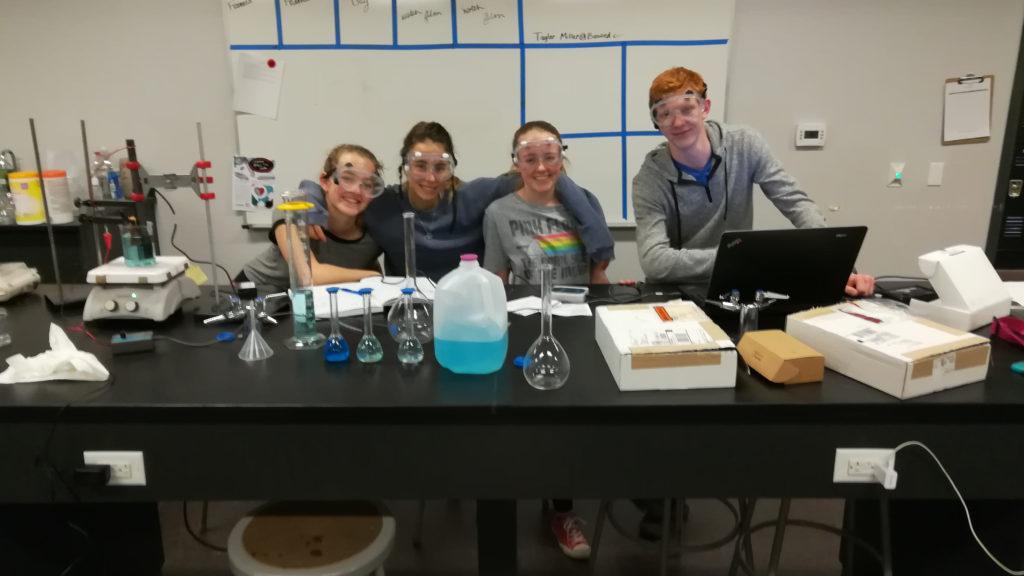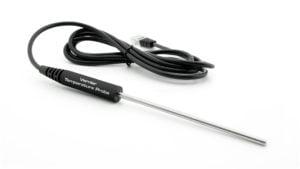The chemistry research group at BASIS Flagstaff Charter School in Flagstaff, Arizona, meets weekly to develop scientific research projects and to learn about different instrumentation and chemical techniques. During the year-long extracurricular group, 11th and 12th grade students act as real-world scientists in that they choose a topic, define a problem, and complete comprehensive research.
With the assistance of subject-expert teacher Tom Talasek, PhD, the student group developed the “Recovery of Copper in Effluent from Advancement Placement Chemistry Labs” research and corresponding investigation. The student researchers included James Dorn, Sophie Fuller, Allison Glazer, Patrick Hsu, Bethany Lane, Grace Martin, Anders Niemi, Danica Pietrzak, and Megan Smith. Their goal was to develop a low-cost, electrochemical method for extracting copper from solutions using equipment commonly found at most high schools. Currently copper must be collected and submitted to hazardous waste facilities, which can be costly for schools.
The students’ research notes that removal methods such as electrocoagulation and electrodialysis, as well as absorption, cementation, membrane filtration, and photocatalysis, are used in industrial applications. However, the students wanted to find a more cost-effective and practical technique for high school labs.
Experimentation with Data Collection
The students developed an investigation in which they evaluated the recovery efficiency using a copper electrode and copper nitrate solution. During the investigation they specifically monitored copper concentration, temperature, and current. Students used the Vernier SpectroVis® Plus Spectrophotometer with Logger Pro® to collect and analyze concentration data, a Vernier Stainless Steel Temperature Probe to read temperature, and the digital readout of the power supply to determine current.
“The Vernier technology is sophisticated yet very intuitive, so students don’t need to spend a lot of classroom time learning how to use it,” said Talasek. “It also gives them the opportunity to use data-collection techniques they may not otherwise be able to test out. Having exposure to this instrumentation, which they’ll also find in college or commercial environments, is big.”
In the initial trials of the investigation, pure copper was dissolved in nitric acid. After dissolving, the copper levels fell to below the detection limit of the method and equipment used. Students also achieved similar results when they tested this method with brass. However, later experiments run at higher voltages revealed recovery issues that the students hypothesized were related to the electro-etching of the electrode.
“As is common in research, students learned that things don’t always work out as planned,” said Talasek. “They learned that they have to adapt and fine tune the process.”
Hands-On Learning in AP and Honors Classes
Talasek uses Vernier technology—including the Drop Counter, Polarimeter, and Melt Station—in his AP and honors chemistry and forensics classes. Much of the technology in his classroom has been acquired through various grants that recognized his innovative teaching practices.
“I try to incorporate hands-on learning in all of my teaching,” said Talasek. “Instead of just reading an AP question, for instance, I want my students to really understand the scientific process and see how it works. This is really valuable for them.”
About the Educator
Tom Talasek, PhD
BASIS Flagstaff
Flagstaff, AZ
Tom Talasek, PhD, has been a subject-expert teacher at BASIS Flagstaff, a K–12 charter school in northern Arizona, for three years. He teaches honors and AP chemistry, forensics, and organic chemistry. He also heads up the school’s extracurricular chemistry research group.



